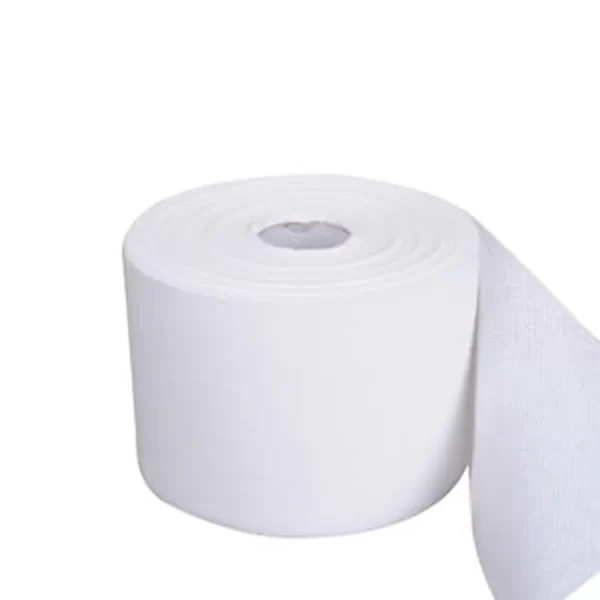Applications of Spunbond Fabrics in Various Industries
Spunbond nonwoven fabrics, renowned for their strength, durability, and uniform structure, serve as a core component in numerous applications across an array of industries. In this comprehensive exploration, we’ll delve into the vital role that spunbond fabrics play in diverse sectors, from healthcare and agriculture to geotextiles and automotive.
Spunbond Fabrics: A Dynamic Material
Spunbond fabrics are a type of nonwoven fabric, generated through a process that entails the extrusion, stretching, and random deposition of continuous filaments of molten polymer. The resultant product is characterized by high tensile strength, excellent uniformity, and superior breathability. Moreover, the physical properties of spunbond fabrics can be extensively customized, making them versatile enough to cater to the requirements of different industries.
Healthcare: A Protective Shield
In the realm of healthcare, spunbond nonwoven fabrics play a crucial role. The critical need for maintaining sterility and hygiene in medical environments has led to the widespread use of spunbond fabrics.
1. Surgical Gowns and Drapes: Spunbond nonwoven fabrics, owing to their high tensile strength, provide an effective barrier against bacteria, ensuring the necessary sterility during surgical procedures.
2. Protective Apparel: In addition to surgical applications, spunbond fabrics are used for other protective wear, such as isolation gowns and caps. Their breathability and comfort make them ideal for prolonged usage.
3. Wound Care: The excellent fluid management properties of spunbond fabrics make them suitable for wound care products like dressings and bandages, providing effective absorption while acting as a barrier against bacterial contamination.
Agriculture: Enhancing Crop Protection
Spunbond nonwoven fabrics have transformed agricultural practices, providing a sustainable and efficient solution for crop protection.
Crop Coverings: Spunbond fabrics serve as protective coverings for crops, shielding them from adverse weather and pests while permitting the passage of sunlight, air, and water, thereby fostering healthy growth.
Landscaping Fabrics: These fabrics are used in landscaping to suppress weed growth, without hindering the growth of desired plants or the absorption of water and nutrients from the soil.
Geotextiles: Infrastructure’s Silent Hero
Geotextiles are permeable fabrics used in association with soil in civil engineering applications. Here, spunbond fabrics have etched a pivotal role.
Separation and Filtration: Spunbond nonwoven geotextiles provide a robust and durable interface between different layers of soil, preventing intermixing while allowing for effective drainage.
Reinforcement: In road and railway construction, spunbond geotextiles enhance soil stabilization, lending durability to the structure.
Automotive: Driving Comfort and Safety
In the automotive sector, spunbond fabrics contribute to both aesthetic and functional elements.
Interior Components: Spunbond fabrics are used extensively in the manufacturing of seat covers, headliners, and trunk linings. Their durability and aesthetic appeal contribute to a comfortable and visually pleasing vehicle interior.
Air Filters: The high filtration efficiency of spunbond nonwoven fabrics makes them suitable for use in automotive air filters, contributing to better engine performance and longevity.
Packaging Industry: A Sustainable Solution
The packaging industry is another prominent sector where spunbond fabrics have made their mark, replacing traditional packaging materials with a more sustainable and functionally efficient alternative.
1. Shopping Bags: With the global push towards reducing single-use plastic, spunbond nonwoven fabrics have emerged as an environmentally friendly alternative for shopping bags. These bags are not only reusable and recyclable, but their strength and durability make them ideal for heavy grocery items.
2. Protective Packaging: Spunbond fabrics also find usage in protective packaging due to their excellent cushioning and impact resistance properties. They can protect fragile items during transport, preventing damage and breakage.
3. Agricultural Packaging: In the agriculture sector, spunbond nonwoven bags are used for packaging seeds, fertilizers, and other agricultural products. They provide excellent protection against moisture, pests, and UV radiation, maintaining the quality of the packed products.
Furniture Industry: Enhancing Comfort and Durability
Spunbond fabrics have also made significant inroads into the furniture industry, where they contribute to both the comfort and durability of furniture pieces.
Upholstery Interlining: Spunbond nonwoven fabrics are commonly used as an interlining material in furniture upholstery. They provide shape and structure to the furniture while also acting as a barrier against dust and allergens.
Mattress Construction: Within mattresses, spunbond fabrics are used as an insulator, preventing the padding from interacting with the coils, extending the lifespan of the mattress.
Personal Care Products: Softness meets Functionality
The personal care industry, too, benefits from the unique properties of spunbond nonwoven fabrics.
1. Diapers: Spunbond fabrics are used in both baby and adult diapers due to their excellent liquid distribution and retention properties. They provide a dry and comfortable feel, improving the user’s experience.
2. Feminine Hygiene Products: In feminine hygiene products, spunbond nonwoven fabrics serve as the top layer, providing a soft and comfortable feel while efficiently managing fluid.
3. Adult Incontinence Products: Here, too, spunbond fabrics contribute to comfort and efficient fluid management, enhancing the user’s experience and confidence.
Construction Industry: Strengthening Foundations
Spunbond fabrics find extensive usage in the construction industry, lending strength and stability to structures.
1. Roofing: Spunbond nonwoven fabrics are used as a roofing underlay, providing a secondary barrier against moisture, wind, and dust. They also enhance the longevity of the roofing system by preventing the ingress of harmful UV radiation.
2. Insulation: In insulation systems, spunbond nonwoven fabrics serve as a facing material, providing additional strength and stability to the insulation material while acting as a barrier against moisture and air infiltration.
3. House Wrap: Spunbond nonwoven house wraps provide an excellent barrier against air and moisture infiltration, improving the energy efficiency of buildings.
Conclusion
Spunbond nonwoven fabrics, with their unique properties and adaptability, are integral to an impressive array of industries. From safeguarding health in medical environments to reinforcing infrastructure, enhancing agricultural yield, and refining automotive comfort and safety, spunbond fabrics continue to showcase their multifaceted utility. As technological advancements further refine the characteristics and production process of these fabrics, their potential for application continues to expand, undersc
Please visit our website for more product details https://medposnonwoven.com/product/spunbond-non-woven-fabric/

